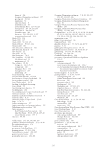16 – Making a living from the Macquarie Marshes – coping with decisions upstream 147 frequently flooded parts of the wetland. These were the areas that we and other graziers relied on for our productivity and sustainability, but they are no longer productive because the country does not flood or floods less often (Figs 16.1 and 16.2). These changes have had a major social, economic and environmental impact on our lives. The floods that shaped the Marshes have changed. We still get the occasional big floods and small floods, but the medium floods are either captured in the large dams or diverted upstream for irrigation. These dependable medium floods provided much of the productive vegetation for our cattle (Fig. 16.2). These impacts on our livelihoods and the Macquarie Marshes environment have sometimes produced acrimonious debate within the agricultural industry (Kingsford 1999), although the science is clear. At various times the landholders in the Macquarie Marshes have been accused of further degrading the wetland by overgrazing. Some even argue that this is the main cause of environmental decline, contrary to scientific evidence and our local experience. Cattle were grazed in the Macquarie Marshes from the 1850s (Fig. 16.2), but the system only began to degrade significantly in the late 1980s. There are areas in the Macquarie Marshes Nature Reserve, now more than 20 years without grazing, where the floodplain vegetation has been destroyed and there are large areas of river red gum hundreds of years old that have died (Catelotti et al. 2015). In 2012, we thought that the future for the Macquarie Marshes looked brighter for the first time in nearly four decades, with the implementation of the Murray–Darling Basin Plan Fig. 16.2. Most (~90%) of the Macquarie Marshes is privately owned with most used for grazing cattle production. Floods are critical for productivity, increasing income and supporting the social community but these have declined with the building of Burrendong Dam upstream, which allows diversion of much of the Macquarie River’s flow to irrigation (photo, D. Herasimtschuck).
Downloaded from CSIRO with access from at 216.73.216.28 on Nov 26, 2025, 1:49 AM. (c) CSIRO Publishing

















































































































































































































































































